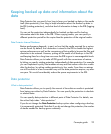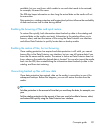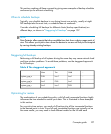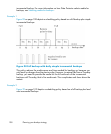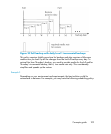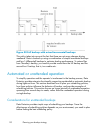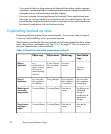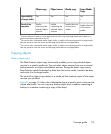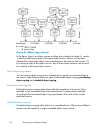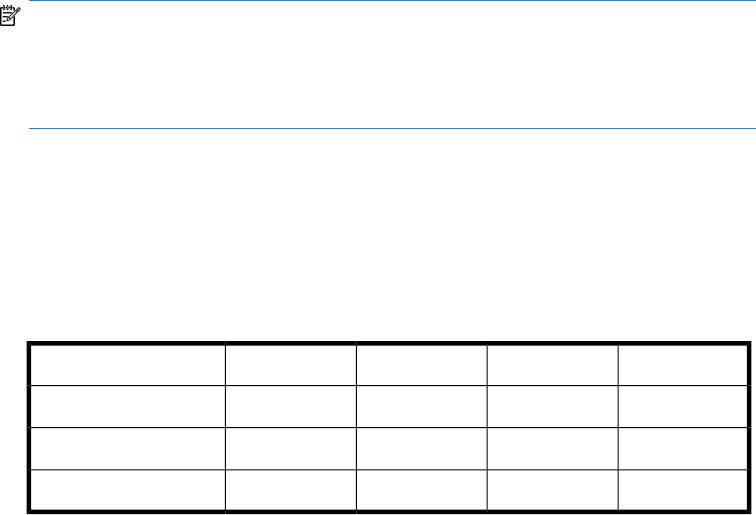
This section combines all these concepts by giving some examples of backup schedules
and some tips for efficient scheduling.
When to schedule backups
Typically, you schedule backups to run during lowest user activity, usually at night.
Full backups take the most time, so schedule them at weekends.
Consider scheduling full backups for different clients (backup specifications) on
different days, as shown in “Staggering full backups” on page 107.
NOTE:
Data Protector offers reports that show available time slots from a device-usage point of
view. This allows you to pick a time where the devices to use are not likely to be occupied
by serving already existing backups.
Staggering full backups
Performing a full backup of all systems during the same day may cause network load
and time window problems. To avoid these problems, use the staggered approach
for full backups.
Table 8 The staggered approach
...WedTueMon
...Incr1Incr1FULLsystem_grp_a
...Incr1FULLIncr1system_grp_b
...FULLIncr1Incr1system_grp_c
Optimizing for restore
The combination of your scheduling policy with full and incremental backups highly
influences the time needed to restore your data. This is illustrated in three examples
in this section.
For a point-in-time restore, you need a full backup plus all the incremental backups
to the desired point in time. Since full and incremental backups are typically not on
the same media, you may need to load different media for the full and each
Concepts guide 107



